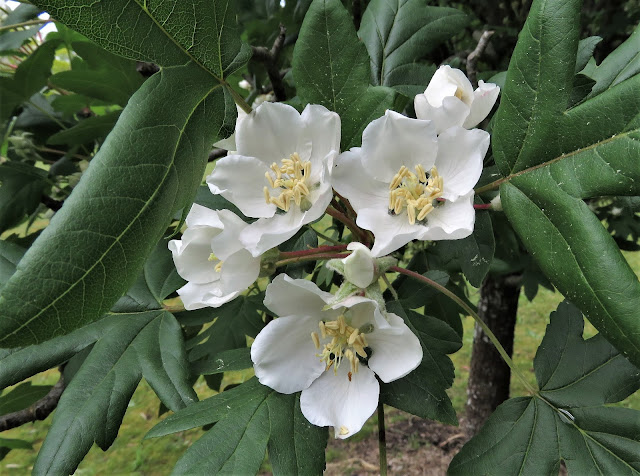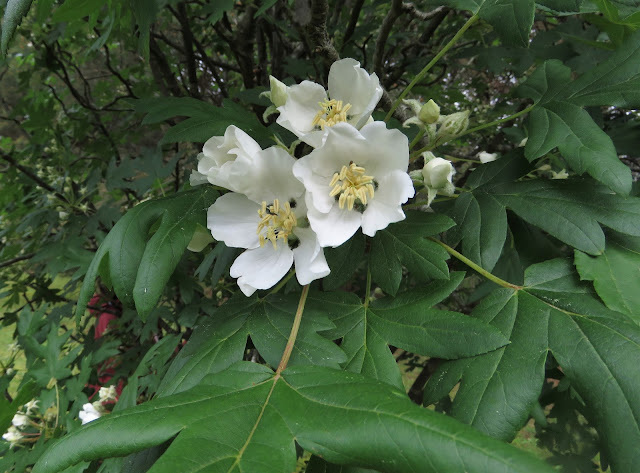Wild apple odd enough for its own genus, perhaps
Last week's post was from a roadside south of Birregurra. This time, it's a garden plant in the township itself. A species often called the Lebanese Wild Apple or Three-lobed Apple/Crab-apple.
It's another Malus, a genus name I covered a few weeks back, and the species name is trilobata - after the leaves, which are three-lobed, and sometimes more.
At least one nursery, is encouraging its use instead of the now ubiquitous Ornamental Pear (Pyrus calleryana 'Capital'). It has the same colourful autumn display, beautiful flowers in spring and narrow habitat but, according to this website, only reaches six to seven metres tall when mature (although some book and online descriptions talk about 15 metre heights)
The size of the flowers, up to four centimetres, impressed me. As did the rose-like buds.
Oh, and the cute 3-lobed (sometimes more), maple-like leaves.
This species is sometimes placed into a separate genus, Eriolobus, but can equally be retained in Malus based on the latest molecular evidence. Kew treat this species as the sole member of Eriolobus but most other authors don't.
The Lebanese Wild Apple does grow wild in Lebanon. And also other Middle Eastern countries, through to Greece and Bulgaria. Like the English/Spanish/French Oak (Quercus robur), each country is likely to have applied it's own local name. My 'Eyewitness Companions' handbook on trees, refers to this species as the Turkish Crab Apple.
No matter its 'common' name, this species is today rare across most of its range and the focus of some local conservation attention, particularly in Greece and Bulgaria.
Wildfires over the last few decades have been particularly devastating for this species, with 40% of its remaining population said to have been lost due to fires between 2007 and 2011. Remaining populations are fragmented and isolated from one another, with little genetic diversity, and there are concerns for its long term survival as a species.
In gardens it should certainly survive, and should be quite tolerant of a warming, dryer climate. I expect the genetic diversity in cultivation is also rather limited, but that's true of most domesticated species.
And yes, the fruits (yellow or greenish, maybe with red flush) are edible but presumably in the way that all crab apples are. They have a 'pear-like' flavour.
Postscript: a photograph from the same specimen, in young fruit, taken on 5 February 2022:
 |





Comments